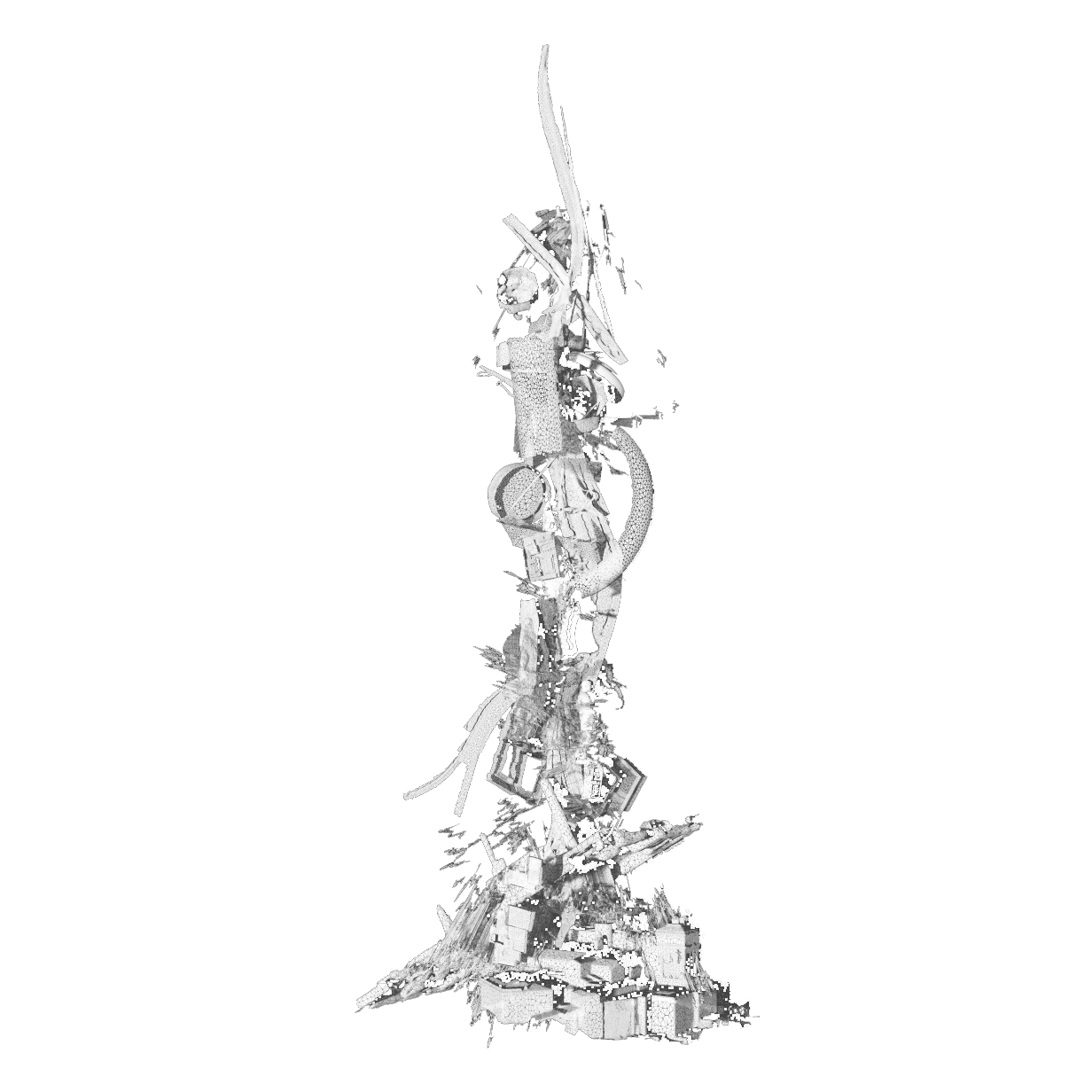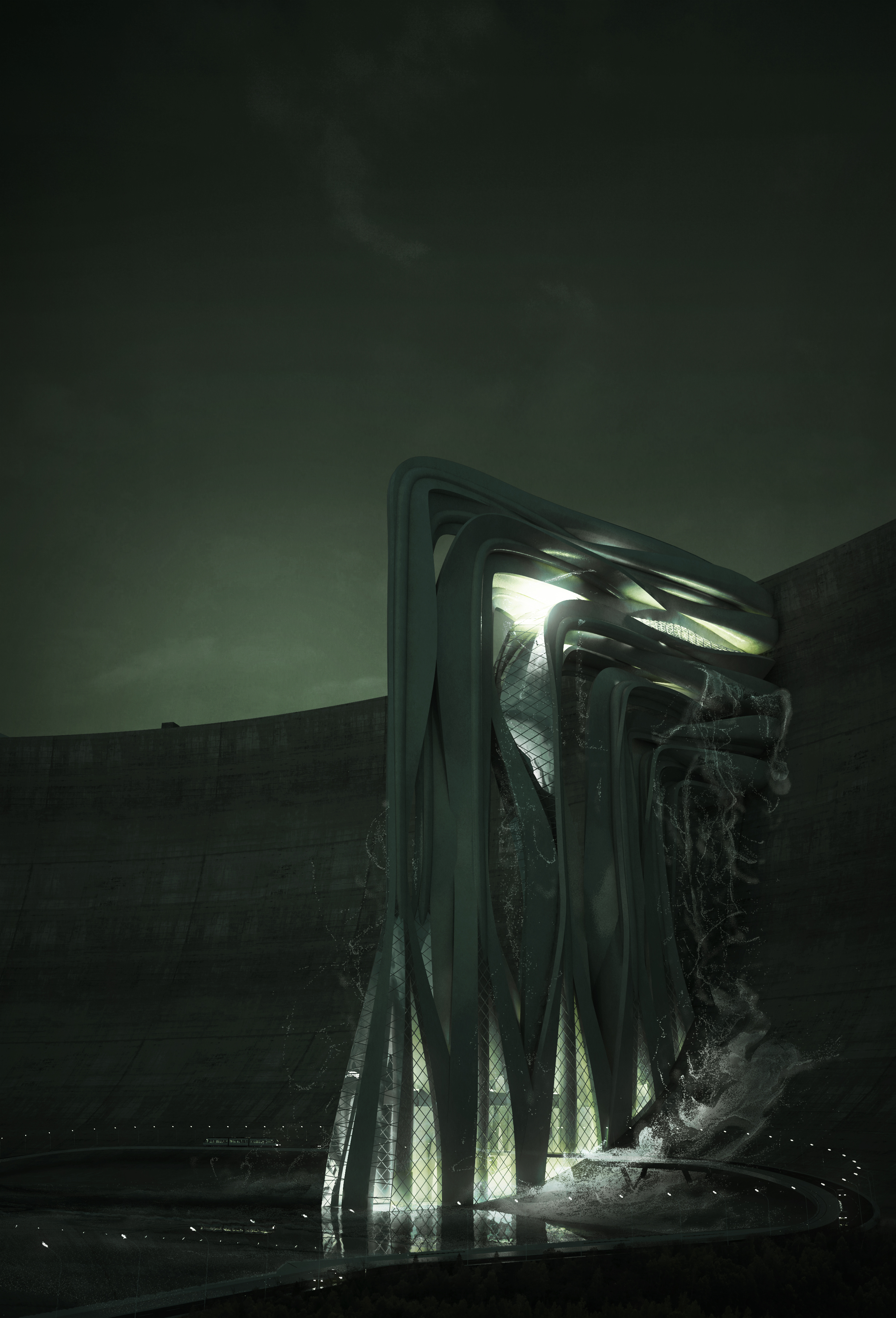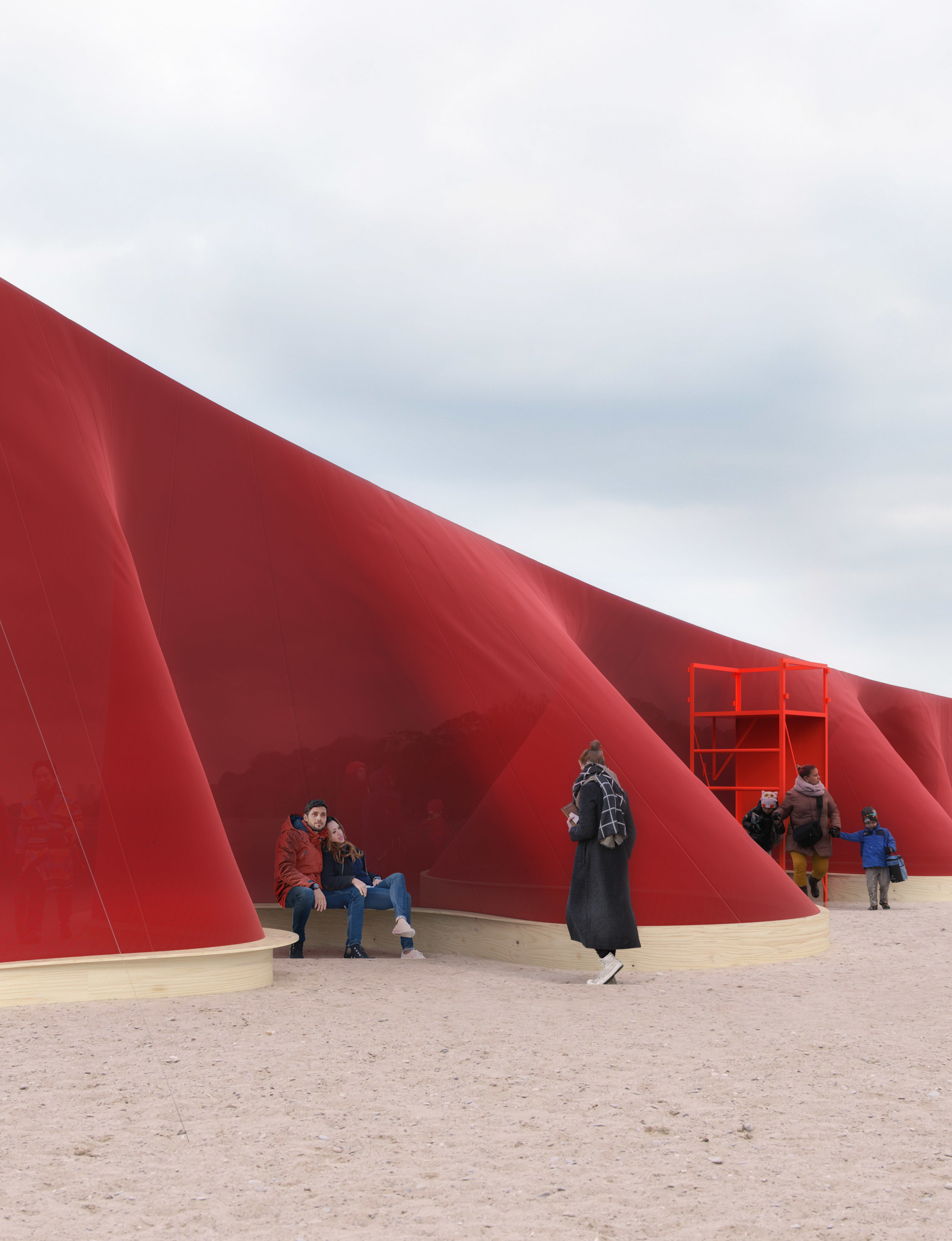
PIRANESSI PAVILLON
SCENERY FOR GL. HOLTEGAARD BAROQUE GARDEN
The pavilion consists of 336 arcs distributed over four levels in a square grid of 36 fields. It takes its starting point in three different adaptations of scenery in connection with the baroque. The maze, illusions and "The imaginary prison."
The maze was in the baroque a symbol of the snares of love; ambiguities, difficulties and feelings associated with love in general. Love is a labyrinth that closes fatally around the unsuspecting, and to go in a mysterious and confusing landscape is seen as a joy - a kind of compressed infinity within a given space. Illusions or manipulations of perspective was extensively used in the baroque era to transform the experience of space. This helped to create surprising constructions that would seduce, impress and convince the visitors - and thus arouse their curiosity. The imaginary prison ( "Le Carceri d'Invenzione") is a series of etchings from Italian Giovanni Battista Piranesi. They show amazing labyrinthine structures, epic in volume and whimsical aggregates of architecture and ruin inspired by his archaeological documentation of Rome.
The pavilion is conceived as a backdrop, framing the baroque garden and its beauty. It is a dynamic backdrop that through illusions surprise, at the same time, appears as a maze and a passage - heavy and light. Piranesis imaginary etchings of the architecture and the ruins in the 1700s Rome, creates the basis for the pavilions expression. An expression that only really reveals itself when the visitor is drawn into the structure and looks to the sky through a tangle of arches.
The stage, which the pavilion creates, encourages play and interaction and the desire to be confused is welcomed. The different series of arches frames elements of the baroque garden and directs the eyes in different directions, so you see the surroundings with a new forced perspective. A perspective which is constantly being challenged by the guests moving around inside. Through its design the pavilion stages itself and the baroque garden and it invites guests to explore its dynamics and illusions, while providing a fresh perspective on the garden - rooted in baroque mysticism.










































































